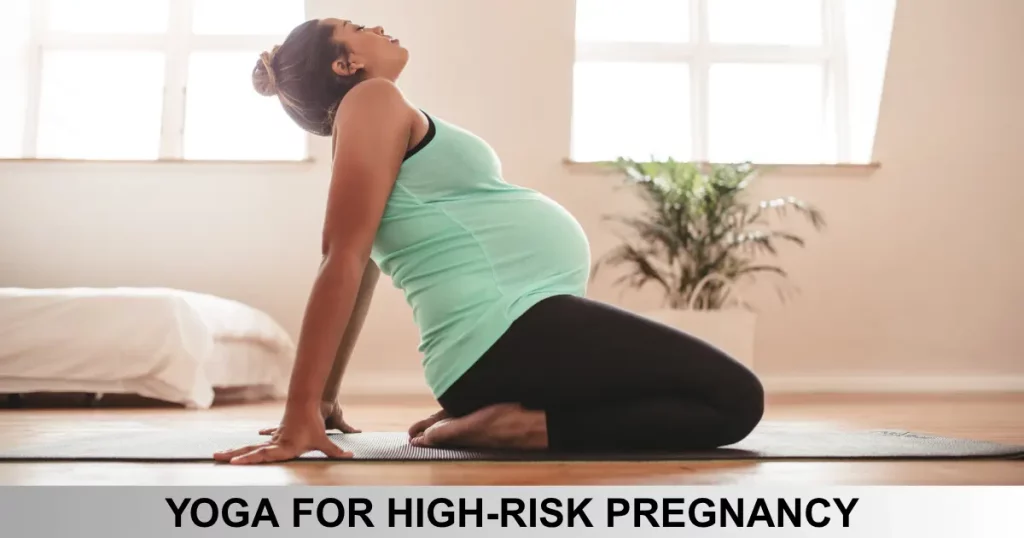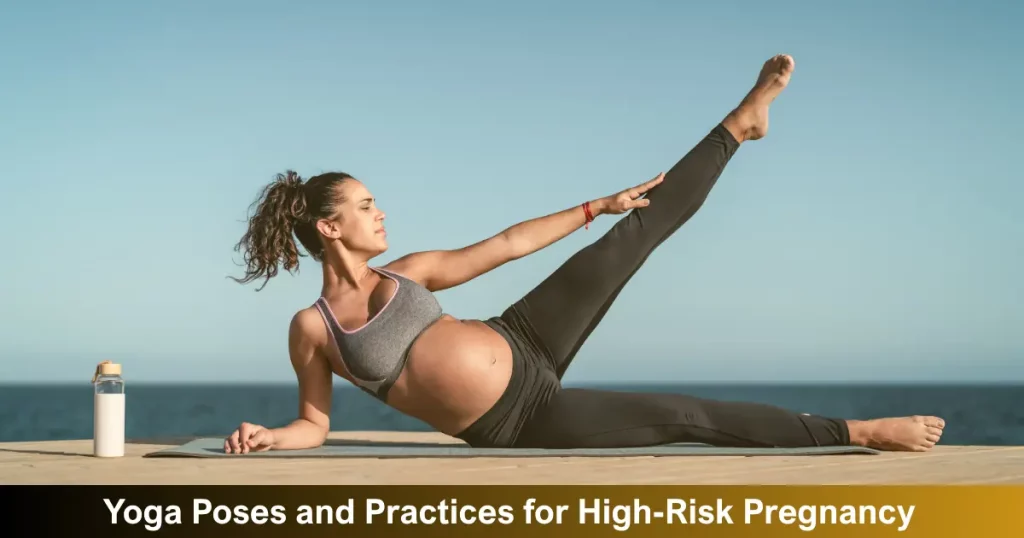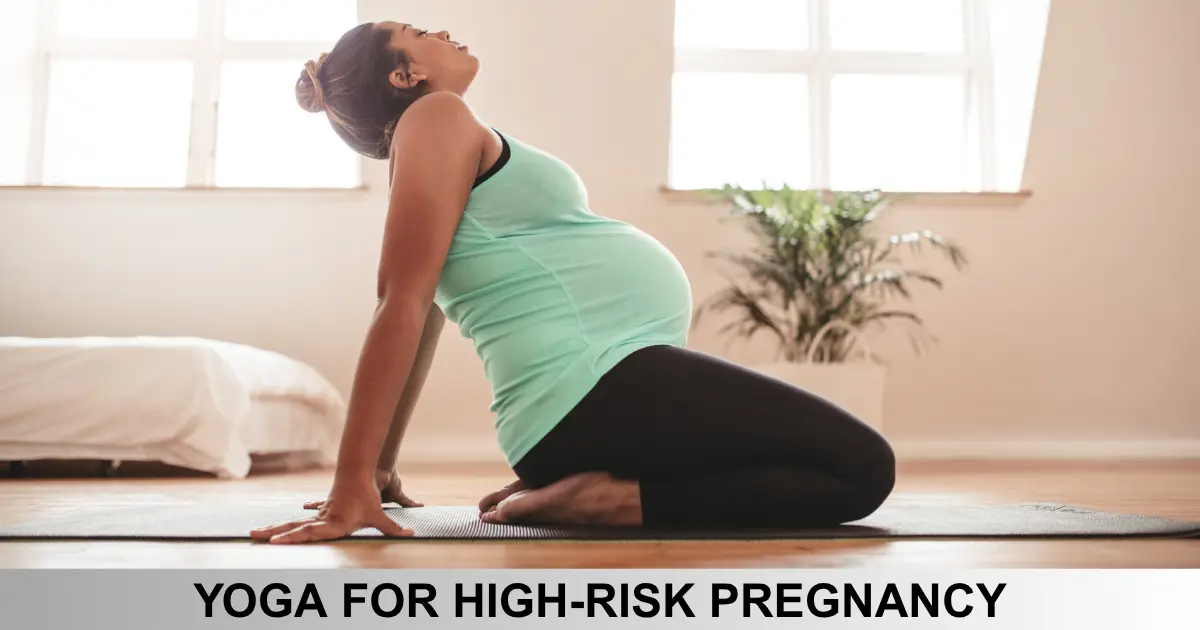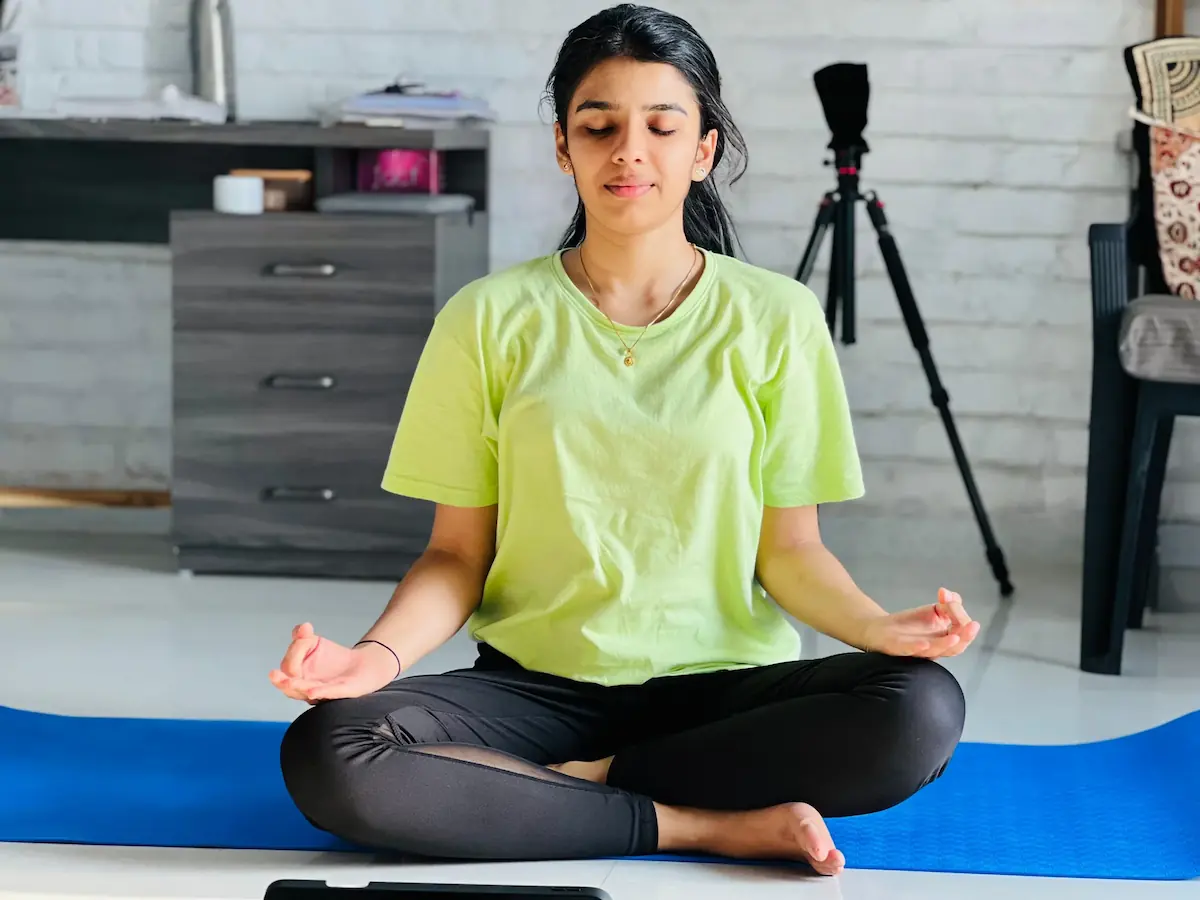Pregnancy is a transformative journey, but for women with high-risk pregnancies, extra care is essential especially when considering exercise like yoga. With guidance from medical experts, here’s how to safely incorporate yoga into your routine, what to avoid, and answers to common concerns.
Understanding High-Risk Pregnancy
A pregnancy is considered high-risk when there’s a greater chance of complications due to factors like:
- Advanced maternal age
- Multiple pregnancies (twins, triplets, etc.)
- Pre-existing conditions (hypertension, diabetes)
- Pregnancy-related issues (preeclampsia, placenta previa)
In these cases, always consult your doctor before starting or continuing any exercise, including yoga.

Step-by-Step Guide: Safe Yoga for High-Risk Pregnancy
1. Get Medical Clearance
- Speak with your obstetrician or healthcare provider before starting yoga.
- Discuss your specific risks and get personalized recommendations.
2. Choose the Right Environment
- Practice in a calm, well-ventilated space.
- Use props like cushions, yoga blocks, and blankets for support.
3. Work with Certified Instructors
- Find a certified prenatal yoga instructor experienced with high-risk pregnancies.
- Avoid self-guided routines unless approved by your doctor.
4. Start with Gentle Warm-Ups
5. Practice Safe Poses
Recommended yoga poses for high-risk pregnancy include:
- Seated forward bends (with support)
- Gentle hip openers (e.g., Baddha Konasana)
- Supported squats (with a chair or wall)
- Side-lying poses (especially for relaxation)
- Simple stretches (avoid deep or forceful movements)
- Pelvic stabilizing postures
- Breathing techniques (gentle pranayama, such as Ujjayi or Nadi Shodhana)
- Relaxation and mindfulness (guided meditation, Savasana on the left side or seated)
6. Focus on Breath and Relaxation
- Use deep, slow breathing to calm the nervous system and reduce stress.
- End each session with relaxation or guided meditation.
What to Avoid: Yoga Poses and Practices for High-Risk Pregnancy

- Inversions (e.g., headstands, shoulder stands)
- Deep backbends (e.g., Chakrasana)
- Abdominal twists
- Balancing poses without support
- High-impact or strenuous movements
- Lying flat on your back after the first trimester (can reduce blood flow)
- Hot yoga or heated environments
- Holding your breath or vigorous pranayama
- Overstretching or pushing beyond comfort (due to increased relaxin hormone)
- Jumping or sudden transitions between poses
If you feel pain, dizziness, or shortness of breath, stop immediately and consult your doctor.
Additional Tips for Safe Yoga Practice
- Stay hydrated and take breaks as needed.
- Wear comfortable clothing that allows free movement.
- Listen to your body: If something feels wrong, skip it.
- Modify poses to accommodate your growing belly and changing body.
- Never skip medical appointments yoga is a supplement, not a substitute for medical care.
- Prenatal Yoga: Dos, Don’ts for a Safer Pregnancy
- Holistic Fertility Tips for Your 30s
- How Prenatal Yoga Strengthens the Bond with Your Baby
Frequently Asked Questions (FAQs)
Is yoga safe during a high-risk pregnancy?
Yes, with your doctor’s approval and under professional supervision, gentle yoga can be safe and beneficial for stress reduction, flexibility, and circulation.
Which yoga poses are best avoided?
Avoid inversions, deep backbends, abdominal twists, poses requiring balance without support, and lying flat on your back after the first trimester.
Can yoga help reduce pregnancy complications?
Studies suggest yoga may lower stress, improve birth weight, and reduce risks of preterm labor and intrauterine growth restriction (IUGR), but always consult your healthcare provider first.
How often can I practice yoga during a high-risk pregnancy?
Frequency depends on your health and doctor’s advice. Even short, gentle sessions a few times a week can be beneficial.
What if I’m new to yoga?
Start with beginner-friendly, prenatal-specific classes led by certified instructors. Avoid self-guided or online routines unless approved by your doctor.
Can I do yoga at home?
Yes, but only after learning proper modifications from a certified instructor and with your doctor’s approval. Always prioritize safety and comfort.
Note: This guide is for informational purposes only. Always seek professional medical advice before starting or modifying any exercise during pregnancy.

